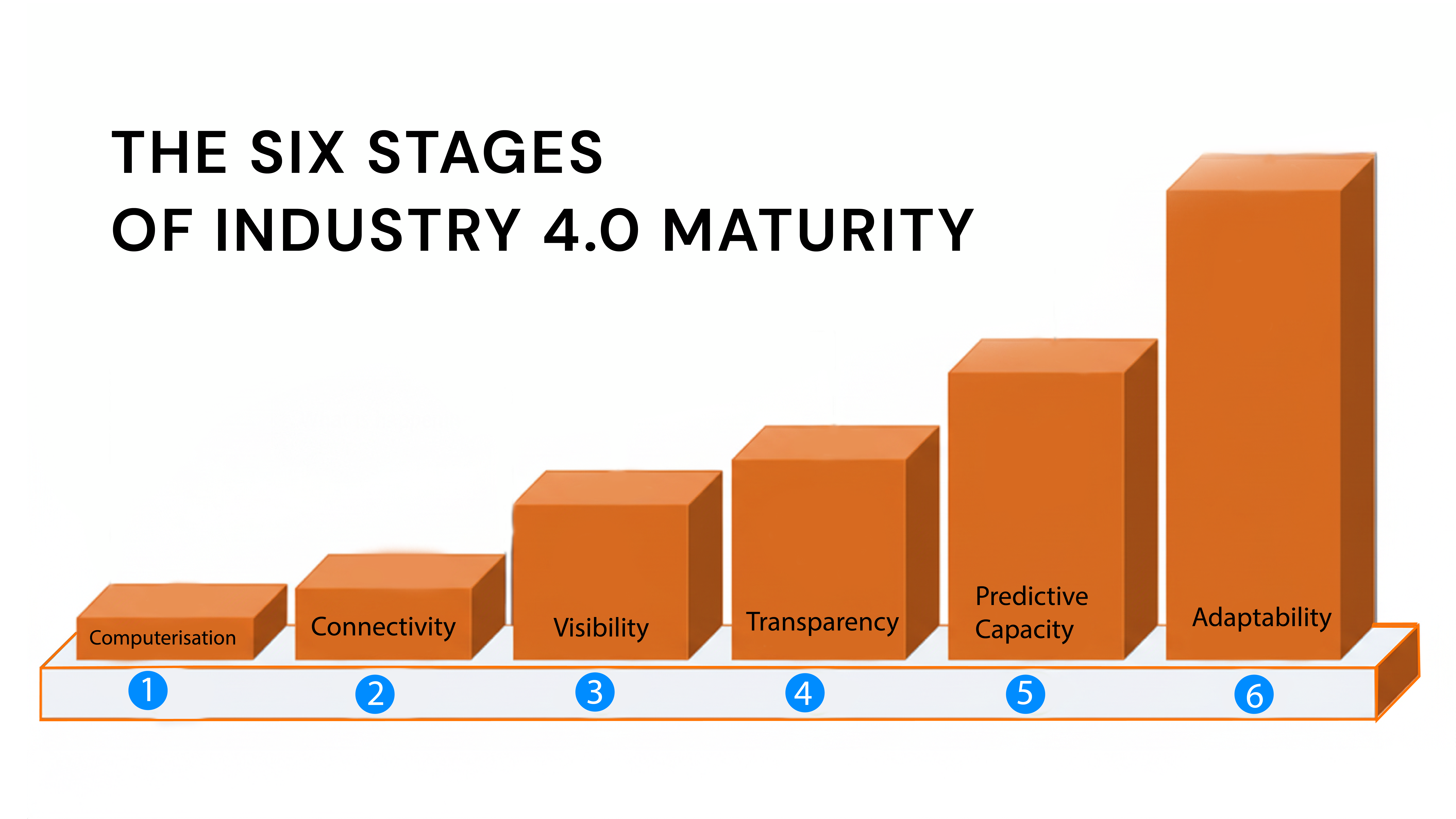The Six Stages of Industry 4.0 Maturity
Most comprehensive maturity models identify six distinct stages in the industry 4.0 journey:
Stage 0: Computerization
Basic digitalization with standalone systems and isolated data islands. Most legacy manufacturers start here.
Stage 1: Connectivity
Systems begin talking to each other. Data flows between previously isolated processes, creating the foundation for integrated operations.
Stage 2: Visibility
Real-time monitoring and visualization capabilities emerge. You can see what’s happening across your operations, but you’re still primarily reactive.
Stage 3: Transparency
Advanced analytics provide insights into why things happen. Root cause analysis becomes data-driven, and patterns emerge from historical data.
Stage 4: Predictive Capacity
Machine learning and AI enable you to anticipate problems before they occur. Maintenance becomes predictive, and optimization becomes proactive.
Stage 5: Adaptability
Full autonomy and self-optimization. Systems adapt to changing conditions automatically, and your manufacturing processes become truly intelligent and resilient.
The Technology Adoption Lifecycle: From Intention to Diffusion
Understanding maturity also means recognizing that different Industry 4.0 technologies follow distinct adoption patterns:
Intention → Adoption → Implementation → Routinization → Continuance → Diffusion
Technologies like IoT sensors and basic data analytics might already be in the routinization stage for many manufacturers, while advanced AI applications and autonomous systems are still in the intention or early adoption phases.
Why Maturity Models Matter: Beyond the Hype
Industry 4.0 maturity models serve three critical purposes:
- Assessment: They provide an objective benchmark for where your organization currently stands
- Strategy: They help prioritize investments and create realistic transformation roadmaps
- Measurement: They enable you to track progress and demonstrate ROI from digital initiatives
Without this structured approach, many manufacturers fall into the “pilot purgatory” trap—running endless proof-of-concept projects without achieving scalable, enterprise-wide transformation.
The Path Forward: Making Industry 4.0 Practical
The most successful Industry 4.0 transformations take time. They follow a deliberate, measured approach:
Start with Foundation Building
Before implementing AI or advanced analytics, ensure you have reliable data collection and basic connectivity in place. You can’t build a smart factory on a shaky digital foundation.
Focus on Use Cases, Not Technology
Identify specific business problems that digital technologies can solve. The goal isn’t to be cutting-edge — it’s to be profitable and efficient.
Develop Your Workforce
Technology transformation without people transformation fails. Invest in training, change management, and creating a culture that embraces continuous learning.
Measure and Iterate
Use maturity assessments regularly to track progress, identify gaps, and adjust your strategy. Digital transformation is a journey, not a destination.
The Competitive Imperative
Companies that successfully navigate Industry 4.0 maturity don’t just survive disruption—they drive it. They become more agile, more efficient, and more responsive to market changes. During recent global disruptions, digitally mature manufacturers didn’t just maintain operations; they gained market share.

